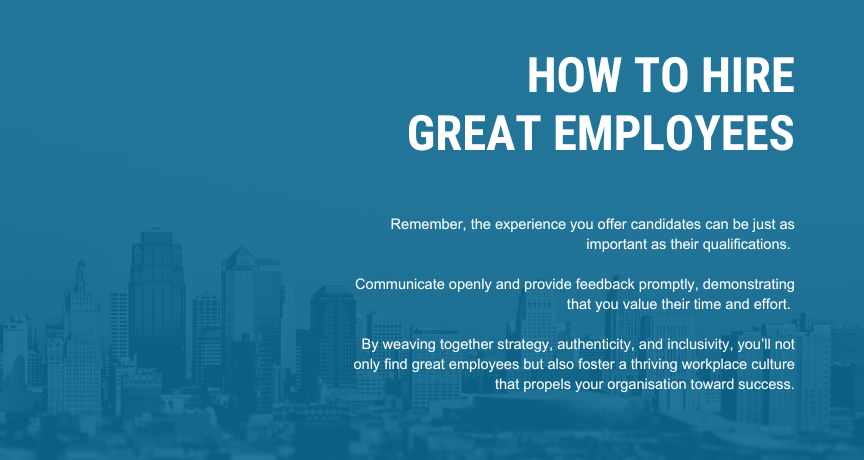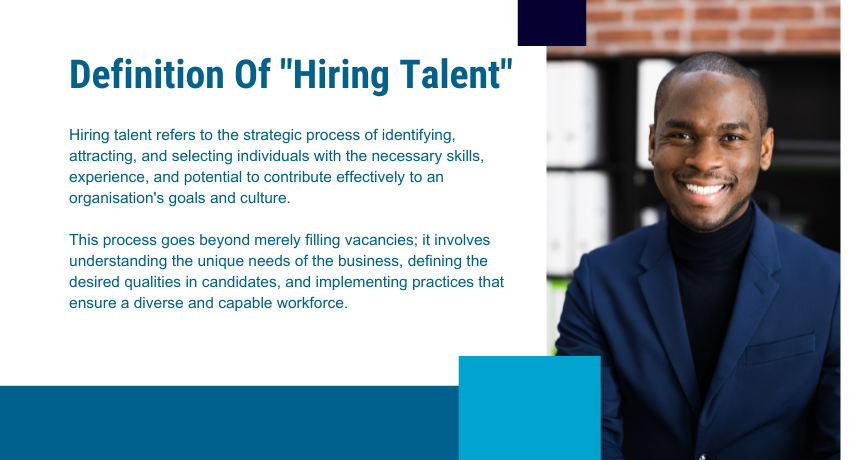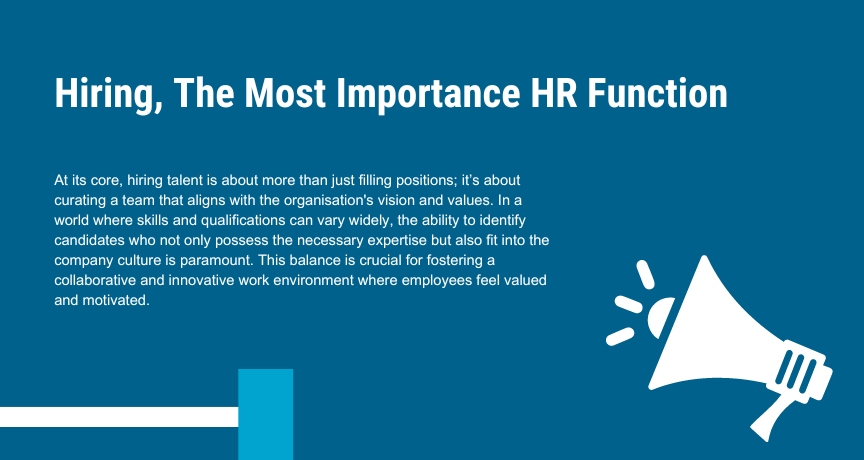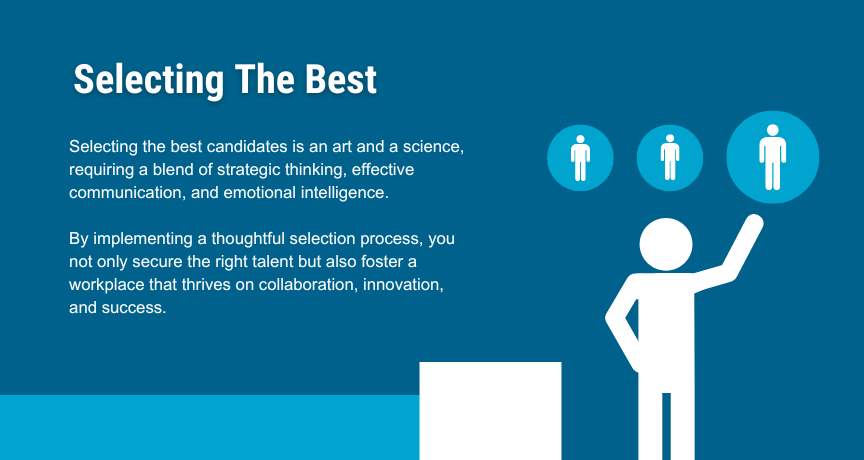Picture your job description as the initial dialogue you engage in with prospective employees - a dialogue that has the power to spark curiosity and enthusiasm.
A job description that is skillfully crafted not only attracts potential employees, but also conveys the purpose, growth opportunities, and values of the organisation. It effectively conveys both the requirements of the position and the essence of the business you represent.
And this is why mastering the skill of writing captivating job descriptions can be the key to attracting high-calibre candidates in a competitive talent market.
Understanding Today's Talent Needs
In an era defined by rapid change and innovation, millennials and Gen Z aren’t just looking for jobs; they are searching for a sense of purpose that resonates with their values.
For these generations, work is no longer simply a means to an end; it’s a vital part of their identity—a canvas on which they can paint their passions, aspirations, and beliefs. As an employer, it’s crucial to understand and cater to these needs.

They seek roles that offer more than financial security; they want the opportunity to make an impact, to be part of something greater than themselves.
Imagine job descriptions as invitations, not just outlines of responsibilities. When crafting these narratives, it’s necessary to convey what makes your organisation tick. Why does your business exist? What is the impact of the work being done? When you infuse your job descriptions with this sense of purpose, you create a magnetic pull that draws in candidates who share your vision and values.
The Quest for Meaning and Security
Modern employees want to know how their contributions will matter, and having these contributions clearly defined in writing can make a significant difference. They want to see a reflection of their ideals in the job they choose.

By emphasising the significance of the role within your organisation’s broader mission, you attract not just any candidate but those who are passionate about the work they’ll do. This alignment transforms the hiring process into a partnership built on shared goals and mutual respect.
The Evolution of Job Descriptions
Gone are the days when job descriptions were little more than dry, uninspired lists of duties and requirements.
Using a well-structured job description template can help ensure that all necessary details are included and presented in an engaging manner.

Today’s job descriptions tell a story - a narrative that invites potential candidates to envision themselves within the fabric of your organisation.
This shift is not merely cosmetic; it reflects a deeper understanding of what candidates truly seek. For instance, instead of stating, “Manage social media accounts,” you might say, “Cultivate our brand’s digital voice and foster community engagement across platforms.” This shift in language makes the responsibilities more compelling and relatable, providing a clearer sense of purpose.
Effective Titles: Making the Right First Impression
One of the most critical elements of a job description is its title. A generic title can easily be overlooked, but a well-thought-out title can capture attention and spark interest.
Rather than using conventional titles that blend into a sea of sameness, consider adopting creative and descriptive titles that resonate with potential candidates.
For example, instead of “Marketing Manager,” opt for “Marketing Innovator: Driving Brand Engagement in the Digital Age.” This approach not only makes the position sound more dynamic but also aligns it with the skills and creativity sought by today’s workforce.
Titles like “Customer Experience Champion” or “Data-Driven Decision Maker” elevate the role’s significance, encouraging candidates to see themselves as key players in your organisation’s journey.
Key Components of Effective Job Descriptions
Compelling Job Summaries
A job summary is the gateway to attracting the right talent. It should engage potential employees by clearly articulating the role’s purpose and the impact they can make within the organisation. Instead of simply listing responsibilities, consider framing the summary as a narrative that highlights how the position contributes to the company’s mission and vision. This approach not only informs candidates but also ignites their passion for the role.
Diversity and Inclusion
Inclusion and diversity must be embraced. Job descriptions need to reflect a commitment to creating a welcoming environment for all potential candidates. By using inclusive language and avoiding biassed terminology, you send a clear message that every employee, regardless of background, is valued and respected. This commitment to diversity not only broadens your talent pool but also enhances your company culture.

Responsibilities and Expectations
Setting clear expectations is crucial for new staff. Outlining the specific responsibilities associated with the position helps candidates understand what is required of them. A well-defined list of duties not only aids in attracting qualified candidates but also ensures that they have a realistic understanding of their role, ultimately leading to higher job satisfaction and retention.
Salary and Benefits
In a competitive job market, candidates are often juggling multiple offers, making it essential to address pay and benefits upfront. Transparency about salary ranges and the perks associated with the position can be a significant factor in attracting top talent. Highlighting unique benefits—such as flexible working arrangements, professional development opportunities, and wellness programmes—can set your job description apart and entice prospective employees to consider your organisation.
Pathways for Growth
Today’s employees seek opportunities for professional development and career advancement. By emphasising pathways for growth within your organisation, you can attract ambitious candidates who are eager to evolve in their careers. Highlight training programmes, mentorship opportunities, and potential career trajectories that demonstrate your commitment to employee development and long-term success.

Action Checklist for Best Practices
Compelling Job Summaries:
- Craft a narrative that highlights the role’s purpose and impact.
- Use engaging language to spark interest.
Diversity and Inclusion:
- Implement inclusive language throughout the description.
- Avoid jargon and gendered terms to create a welcoming atmosphere.
Responsibilities and Expectations:
- Clearly outline key responsibilities and day-to-day tasks.
- Use bullet points for easy readability and comprehension.
Salary and Benefits:
- Provide a salary range and details of the benefits offered.
- Highlight unique perks that enhance work-life balance and job satisfaction.
Pathways for Growth:
- Describe opportunities for professional development and career progression.
- Mention mentorship programmes and training initiatives.
Action Checklist for Best Practices:
- Check resources and tips to ensure compliance with legal requirements and best practices during the hiring process.
By incorporating these key components and best practices into your job descriptions, you can create compelling narratives that attract top talent and foster a positive candidate experience.
Evaluating Job Description Effectiveness
Creating a compelling job description is just the beginning; evaluating its effectiveness is necessary for continuous improvement. To ensure your job descriptions resonate with the right candidates, you need to implement robust assessment methods.
For instance, small business owners in the UK may face different challenges and opportunities when crafting job descriptions.
Start by checking the application rates. A high volume of applications typically indicates that your job description effectively attracts interest. However, it’s equally important to analyse the quality of those applications. Are candidates meeting the qualifications you’ve set forth? If not, it might be time to revisit the clarity and specificity of your job requirements.

Gathering candidate feedback is another invaluable tool in this evaluation process. After interviews or upon hiring, consider asking candidates about their perceptions of the job description. Did it accurately represent the role and the company? Did it reflect the culture and values you wish to promote? Their insights can help you refine your messaging to better connect with potential employees in the future.
Additionally, monitor how quickly positions are filled. If you find that roles are taking longer to fill than expected, it may indicate that your job description isn’t effectively communicating what you’re looking for or what you’re offering.
By taking the time to assess your job descriptions using these methods, you can ensure that you’re continually improving your approach, finding the best talent, and creating a hiring process that not only saves time but also aligns with your business goals.
BCU Support and Partnership
Should you ever find yourself struggling to strike the right balance when attracting talent, remember that Birmingham City University is here to support you.
Our dedicated account-managed recruitment team is committed to assisting you in finding candidates with the aptitude, ability, and forward-thinking skills to drive your business growth objectives forward. Whether you're looking for part-time student hires or high-calibre graduates to inject fresh perspectives into your business, we're here to help.
Partnering with us opens doors to numerous benefits, including access to a diverse pool of work-ready graduates and students, opportunities for free training, and the chance to inspire new skills and knowledge within your workplace. Additionally, our services extend beyond recruitment, providing opportunities for collaboration and connection with other businesses in our network.






